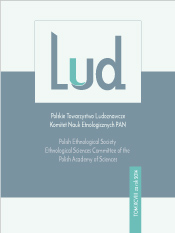Chłop-niewolnik? Pańszczyzna w perspektywie antropologii historii
Peasant-Slave? Serfdom in the Perspective of Anthropology of History
Author(s): Michał RauszerSubject(s): Anthropology, Social history
Published by: Polskie Towarzystwo Ludoznawcze
Keywords: peasants; slavery; unfree labor; serfdom
Summary/Abstract: This papers involves analysis of the place of peasants in Polish Serfdom structure as well as in context of unfree labor. The goal is to show how structure of economical exploitation of peasants labor works in the context of hegemonic practices of landowners. System of Polish serfdom was in the very sense different from New World Slavery but we can find similarities. Situation of Polish peasants during serfdom was based on formal and social subsumtion under the rule of the landowners (there were also peasants owners). Due to this same ethnic background polish landowners create ideology of their Sarmatian origin. This ideology was a tool to build race differentiation between landowners and peasants. This racial differentiation serve as hegemonic justification of exploitation of the peasants. In my article I want to show both political and social mechanism lead to this exploitation as well as on what basis and on what resources this justification was endowed. keywords: peasants; slavery; unfree labor; serfdom
Journal: LUD
- Issue Year: 101/2017
- Issue No: 1
- Page Range: 107-127
- Page Count: 21
- Language: Polish

